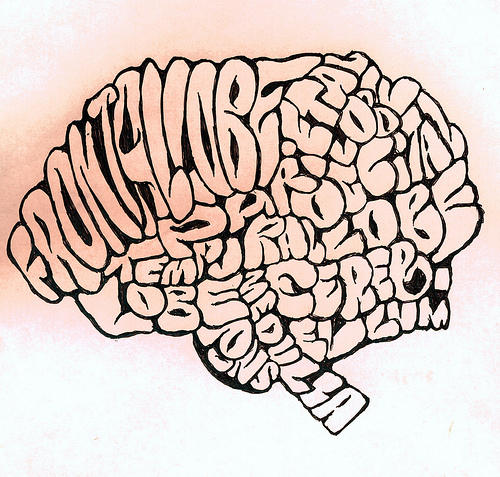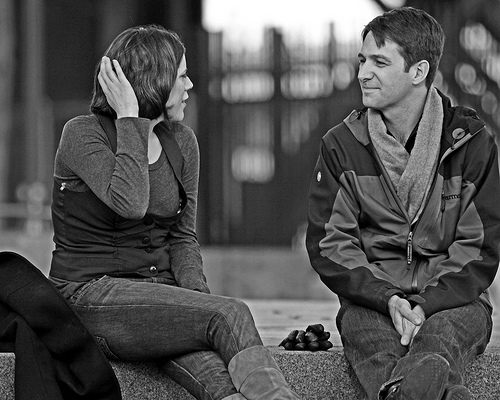 In their book Connected: The Surprising Power of Our Social Networks and How They Shape Our Lives, sociologist Nicholas Christakis and political scientist James Fowler look at what it means to be a human being in terms of our interpersonal networks. One of the topics they take up is an examination of how selfishness, cooperation, and altruism interact, which helps answer the question in the title: can we expect others to help us?
In their book Connected: The Surprising Power of Our Social Networks and How They Shape Our Lives, sociologist Nicholas Christakis and political scientist James Fowler look at what it means to be a human being in terms of our interpersonal networks. One of the topics they take up is an examination of how selfishness, cooperation, and altruism interact, which helps answer the question in the title: can we expect others to help us?
Christakis and Fowler take results from experiments around the world with three games. In the “Ultimatum Game,” two people are given an amount of money (for instance, ten dollars). Person 1 makes an offer to split it with the other, offering anything from a penny to a 50/50 split to handing over the whole amount. Person 2 decides to reject or accept the offer. If Person 2 rejects the offer, neither person gets anything.
The “Dictator Game” is similar, except that any offer is automatically accepted. All the power lies with Person 1.
In the “Trust Game,” Person 1 can give any amount to Person 2, and that amount triples, at which point Person 2 can give any amount back. If both cooperate completely, they each get more than the original amount. If they don’t, someone gets screwed.
I won’t go into the experimental findings in detail, but instead will head straight for the conclusions Christakis, Fowler, and others draw from the results. Based on the mixture of selfishness, cooperation, trust, mistrust, and other attitudes demonstrated by subjects in these experiments, they identify three types of people: cooperators, loners, and free riders.
Cooperators tend to trust more, are more helpful to others, and are dependent on other people trusting and helping in return. Loners tend not to trust and try not to depend on anyone else. Free riders take advantage of cooperators to get whatever they can for themselves without offering anything in return.
A cooperator in the midst of other cooperators thrives. A cooperator who runs into too many free riders gets screwed. A loner is less successful than others if everyone else is successfully cooperating, but isn’t in danger of being taken advantage of by free riders. A free rider thrives when cooperators let things go, but runs into trouble with a sort of cooperator sub-type that Christakis and Fowler dub “Punishers.” Punishers are willing to exert some effort to penalize people for not cooperating or for taking advantage of the system.
In the ultimatum or dictator game, a cooperator might offer half or close to half of the money to the other person. A loner in the trust game will assume the other person is going to take advantage and act defensively. A free rider will take the most money available regardless of consequences to the other player. A punisher in the ultimatum game will refuse an offer that seems too low even though this would mean both players lose out.
What’s fascinating to me is that according to Christakis and Fowler, a society is made up of all of these types, but the proportions of each are constantly shifting. There appear to be times and places where cooperators spread, which might eventually attract free riders, which in turn will attract punishers and perhaps turn some of the cooperators into loners. If loners are everywhere, then some might band together and be more successful by cooperation, starting the cycle over. During each separate phase of this cycle, which might last for some time, there are different opportunities and dangers, and the question of whether help is likely to be available is answered differently.
So when looking for help in our lives, there are questions we can ask ourselves. Are we given to cooperation, or do we tend to do things on our own? What about the people around us? And whether or not a person tends to help in one area suggests a lot about whether that person is likely to help in another. For instance, a person who gives money to public radio is also more likely to volunteer to help you move or to give you directions if you’re lost. A person who works in a kind of job that emphasizes getting as much as you can, like a stockbroker or auto salesperson, is less likely to trust and offer help to others–though of course it’s inaccurate to make blanket statements about people on this matter; these are just general observations that are often true.
Regardless, making these kinds of observations about yourself and the people you’re connected with can help provide insight both about what you’re contributing and what you can expect from others.
I’ll post a full article on the book Connected some time in the next couple of weeks.
Photo by Michael Kalus








